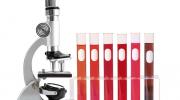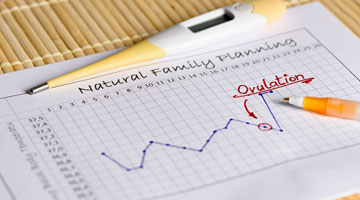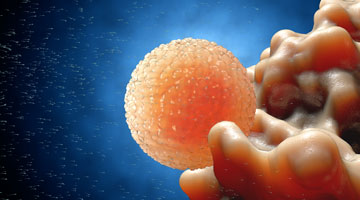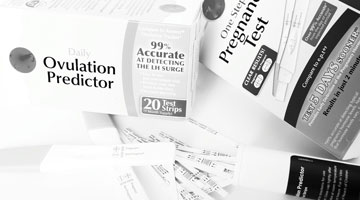Ovulation and Fertility
Ovulation
The decisions are endless when it comes to the big question: Are we ready for a baby? Is now the right time? Are our finances in good shape? You’ve been thinking, discussing, and saving with your partner and now the time has come—You’re ready for baby! You may already be feeling new questions creeping on: How do I know if I’m fertile? When am I ovulating? How do you figure out your ovulation cycle? How long should it take for me to become pregnant? Luckily, Kids in the House has compiled direct and insightful information from leading experts in fertility and pregnancy to help you with these and many other questions.
Healthy Mom, Healthy Baby
After deciding to have a baby, it is time to schedule an appointment with your doctor. Your health is paramount when it comes to conceiving and carrying your baby. Fertility specialist, Dr. Kristin A. Bendikson, recommends the following tips to improve your chances:
- Begin taking your prenatal vitamins. Be sure to take vitamins containing folic acid which helps protect the brain, brain stem,
... Read more nal cord development in the fetus.
Being significantly overweight reduces fertility potential and increases the risk of miscarriage. Importance should be placed on increasing exercise and modifying nutritional intake.
Being significantly underweight diminishes fertility rates. This is due to abnormal or absent periods and ovulatory cycles. Improving nutritional intake or reducing exercise will help your body re-establish ovulation.
Check your family history. There are genetic diseases, some related to ethnicity, that you may want to rule out before proceeding.
Ovulation: Getting the Timing Right
Knowing when you’re ovulating is the key to becoming pregnant. Ovulation is when a mature egg is released from a woman’s ovary, travels down the fallopian tube, and is ready to be fertilized. Ovulation happens approximatively every month. The ovulatory cycle typically lasts 28 days from the first of one period to the first day of the next period. Within those 28 days, a woman usually ovulates around day 13 or day 14. Some women have a 35-day cycle between periods, in which case ovulation takes place on day 18 or 19.
Fertility specialist, Dr. Richard Marrs, suggests a simple method to calculate a woman’s time of ovulation that can easily be done at home—a temperature chart.
“Before she gets out of bed each morning, she takes her temperature, writes it down on a chart,” Dr. Marrs explains, “And at the time of ovulation, the temperature is at a baseline level, it’s kind of consistently until ovulation, and it shifts up and stays up after ovulation.”
Temperature charts are a great start to calculating your ovulatory cycle but there are other, more direct ways of determining ovulation, including urine samples. Dr. Marrs also recommends using a urine dipstick picked up at a local drugstore starting around day 10 or 11 of your 28-day cycle. The dipstick will indicate when their LH, a hormone released preceeding the release of the egg, surge occurs. When a positive test is read, it is a signal to have intercourse that day and the following day to align with ovulation.
Co-founder and partner of the Southern California Reproductive Center, Dr. Hal Danzer, suggests an even more precise and accurate method to determine ovulation, “With ultrasound, you can start out early in the cycle. When a follicle is about 5 millimeters, it has a little microscopic egg inside. Over three or four days that follicle is then 10, 12, 13 millimeters. By the time it gets to be 20 millimeters and you can see that very clearly with ultrasound, we know that that microscopic follicle inside the follicle is ripe and ready to ovulate.”
Is Age Only a Number?
The right time to have a baby does not coincide with a woman’s age. However, fertility rates do change over the course of a woman’s life.
Leading experts, including Dr. Hal Danzer, report that on average a woman under the age of 35 will get pregnant in about 1 in 3 cycles. Between the ages of 37 to 40, the average slows to 4 to 5 cycles. This is primarily due to a woman’s egg supply.
“The most eggs a woman will have in her ovaries is actually when her mother was pregnant with her at about five months of gestation. At that point, a woman is going to have about 4 million to 6 million eggs in her ovaries. By the time she is born, that number is going to decrease between 2-3 million. By the time a woman reaches puberty, the number has already decreased to 400,000. When a woman reaches menopause—the average age is 51—the eggs are gone,” says fertility specialist, Dr. Kristin A. Bendikson.
Treating Infertility
Perhaps you’ve been trying to get pregnant and have yet to see results. When is the right time to see a specialist? How soon is too soon to consider the possibility of infertility?
“The definition of infertility is changing. Traditionally, it was a year of trying to get pregnant, but now we've changed that,” says Dr. Hal Danzer, “For women under the age of 35, for young couples, a year of trying with regular cycles, that is the diagnosis of infertility. A woman 37 or 38, trying six months with regular cycles; that becomes the definition of infertility.”
If you are under 35 and have been trying to get pregnant for over year or over 35 and trying for 6 months, a consult with a fertility physician may help illuminate the problem. To determine their diagnosis, a fertility expert will take a medical history, conduct a physical exam or ultrasound, analyze your partner’s semen analysis, and use an HSG test.
“An HSG stands for a hysterosalpingogram. It's a mouthful,” says Reproductive Endocrinologist and Infertitlity specialist, Dr. Kari Sproul, “Essentially, why we do this test is because it evaluates the uterus and also the tubes. What is done is dye is injected into the uterus and then theoretically it goes through the tubes and spills out into the abdominal cavity. We then can see if there is anything inside of the uterus that would prevent implantation and we can see if the tubes are open so that the egg and sperm can meet in the tube.”
If you are under 35 and having difficulty becoming pregnant, it may be due to an irregular or absent ovulation cycle.
“We treat those types of patients very simply, normally with clomiphene citrate, which is a pill that will normalize ovulation,” says Dr. Marrs, “If that doesn’t work in certain cases of ovulatory dysfunction, women will take natural FSH, follicle stimulating hormone, and luteinizing hormone which are the two hormones in the pituitary gland that create ovulation within the ovarian follicle system.”
A fertility specialist may be able to recommend treatments for women having difficulty becoming pregnant, such as in vitro fertilization.
“In Vitro fertilization is taking many eggs from the ovary of a woman and fertilizing those in a dish, and that's in vitro, and then allowing those embryos to grow,” says Dr. Hal Danzer.
Our Top Experts
For more information on fertility, ovulation, and infertility, check out what the top experts have to say on getting pregnant at http://www.kidsinthehouse.com/pregnancy/fertility





































Comments
SIgns of Ovulation
Tracking your ovulation dates is the most ideal way to get on track with TTC. I used the traditional means and then looked out for the sings. I read this informative article - https://www.whattoexpect.com/getting-pregnant/fertility/five-ways-to-tel...